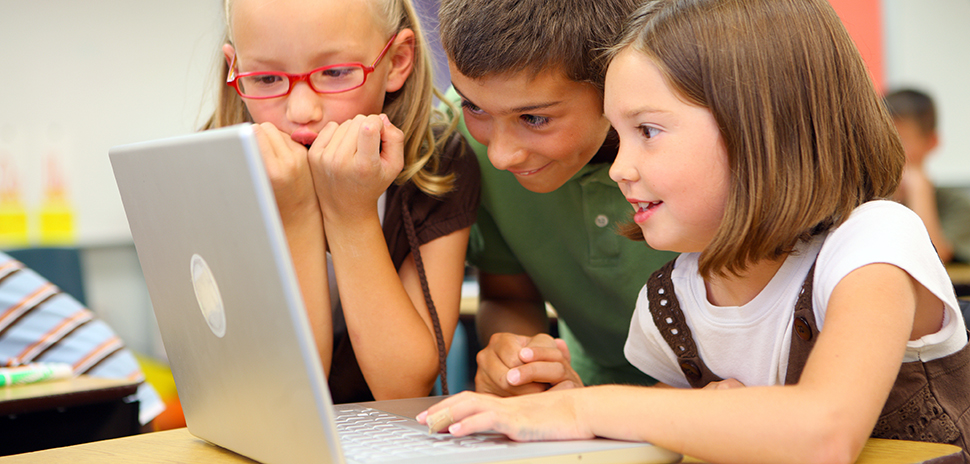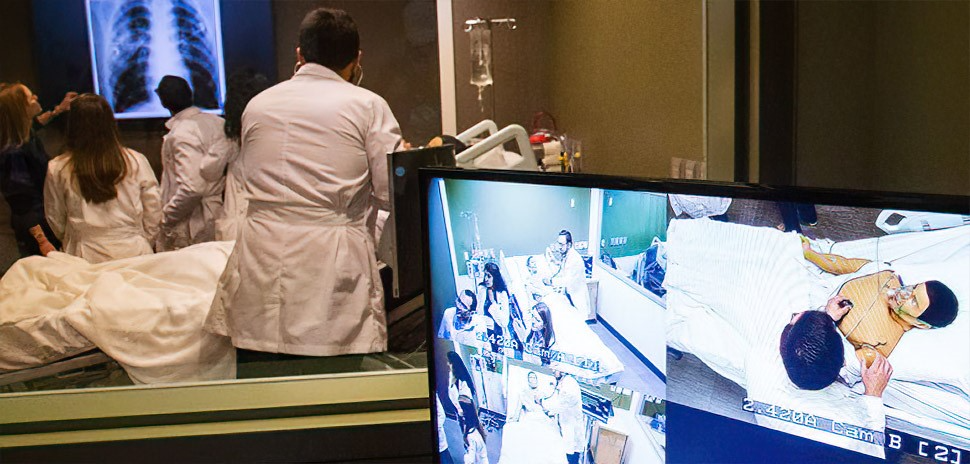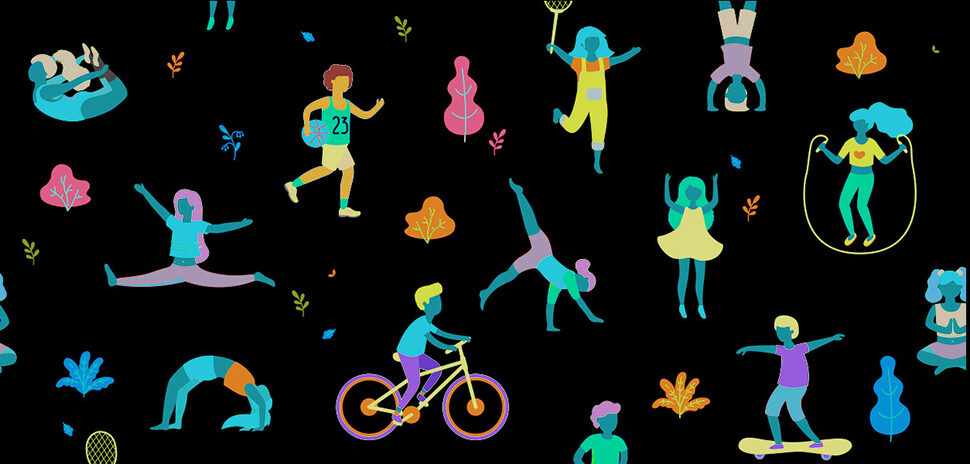Northwest ISD administrators, Dr. Robert Thornell, assistant superintendent of curriculum and instruction, and Cara Carter, director of instructional technology, discuss the ways technology has transformed education and how schools should continue to adapt. These responses have been edited for brevity and clarity.
In what ways do you think technology has most transformed education?
The biggest way technology has changed education is that really there are no walls anymore and learning is limitless. Students have access to a world of knowledge, professionals, and opportunities to engage in a global environment. It has really forced us as educators and leaders to rethink what we do.
Why would they even come to school? If we are creating experiences that make them expand their horizon, ask more questions, fail as much as they succeed, then we are doing something right. The biggest challenge now is for them to critically think about the information they find online, be able to locate unbiased resources, and put information out there that is accurate and ethical.
… really there are no walls anymore and learning is limitless.
Technology has also had a large impact on teacher training, professional learning, and instruction. Teachers have the same increased access to information and learning that many students have. Training has become more affordable, more efficient, and more effective as more and more educators take advantage of world-class resources to improve their own teaching and the classroom experience for their students. This includes, but is not limited to, access to professional certifications (students and teachers) and advanced degrees expanding the pool of highly-trained educators.
What big changes do you foresee on the horizon?
We have learned quickly that anticipating the limits of technology is a fruitless endeavor. Schools must be flexible and adapt and innovate. From a technology standpoint, two major components we’ve really just starting scratching the surface on are augmented reality and coding.
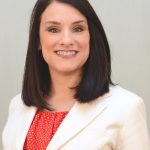
Cara Carter
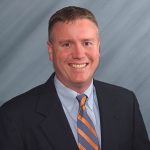
Rob Thornell
With augmented reality, while it’s still a developing technology, it has a lot to offer education. Viewing a heart from the inside out brings a level of understanding that is without competition. Being immersed in a geographical location that you could never visit, brings about questions and inspiration to solve problems.
Coding is also a growing field that isn’t going away. Not only is there a huge demand for computer science jobs, but coding is finding its way into so many things professionals do. Having the problem-solving skills that coding has to offer makes our students more marketable, no matter what professions they explore.
From a general education standpoint, we’ve got to find other ways for students to showcase what they’ve learned that goes beyond a test score. In NISD, we are gradually implementing a student e-portfolio program that provides students from as young as first grade to showcase their work in an electronic portfolio. Our students in grades 3-12 are provided a Google Chromebook and much of their assignments and communication are done through digital means.
What are the next steps schools need to take to better prepare students for future careers?
Schools are going to have to be more flexible; in mindset and physical layout. The school day is going to be more individualized with release time for classes and work/study programs to be more and more a part of the options provided to students.
Schools are going to have to be more flexible; in mindset and physical layout.
In addition, buildings themselves are being designed differently. Spaces for collaboration, the integration of technology, and problem-based learning are rampant in new school design. Our most recent high school project includes foldable walls, interactive screens in hallways as well as designated collaboration spaces, and flexible furniture than can be easily adapted to a variety of learning spaces.
What DFW schools or education programs come to mind when you think “innovation?” What lessons can others learn from them?
Five years ago, several area districts banded together to create the North Texas Regional Consortium. This group made up of nine districts (Northwest ISD, Highland Park ISD, Coppell ISD, Lewisville ISD, Frisco ISD, Plano ISD, McKinney ISD, Richardson ISD, and Allen ISD) comes together several times a year to plan and discuss the future of education and how they are meeting the future needs of students. In addition, Allen ISD has hosted more than 1,000 educators in 2014 and 2015 at a Visioning Conference where teachers from the nine districts came together to collaborate with one another. The next Visioning Conference is scheduled for July 2017 and will be hosted by Northwest ISD.
In NISD, we have adopted Educational Academies. We have eight different academies (two at each high school) that are designed for authentic, real-world experiences, working with businesses (i.e. catering for companies, creating logos, commercials for hospitals, providing real-world experiences to the public, etc). Because each academy is different, NISD provides “schools of choice” by allowing students to apply to any of the academies that interest them.
Lewisville ISD offers an example of blended learning. Regardless of whether students decide to go into college or career, they will all be in environments where they need to be self-advocates and self-disciplined. We need to explore ways to gain course credit beyond face to face.
We need coding at the elementary level where it’s integrated and not an optional club.
We need coding at the elementary level where it’s integrated and not an optional club.
A maker movement that is part of the classroom culture and not a “side gig.” We just need to make sure the maker movement isn’t the next computer lab, where we stop what we are doing to go to a lab to be creative. How can we create those experiences in the classroom for our students every day?
Vertical grouping like they do in Coppell at Lee Elementary School; This may be the hardest one for public education to adapt to.
What qualities will the teacher of the future need in an increasingly tech-driven society?
Teachers need to have the ability to learn and relearn, be flexible, and understand that education is changing at an exponentially fast rate.
Do school systems need more freedom or regulations to improve academic performance?
Our schools and communities need to have the freedom to direct the future of their schools locally and free of unfunded mandates. The absences of regulations will allow for more innovation and creativity by schools and teachers.
Our vision is for students to be future ready. We know that means they must collaborate with others, connect with culturally diverse groups, be self-disciplined, practice ethical behaviors in a digital environment, and solve real-world problems. We need the freedom to peruse those endeavors and the absence of regulations which allow us to align our resources accordingly.
What are the biggest challenges facing education in 2017 and how can school systems overcome them?
Much of society of has lost faith in public schools and we have to adjust and adapt to meet the needs of all students in order to restore it.
If we don’t offer alternative ways for students to get course credit (virtual classes, blended learning) we will drive some students away completely and make the ones we have ill equipped for their future.
Funding also remains a huge challenge for public schools. Schools districts will find it difficult to keep up with the costs of technology and program needs in the face of insufficient funding from the state.
Delivering what’s new and next in Dallas-Fort Worth innovation, every day. Get the Dallas Innovates e-newsletter.

